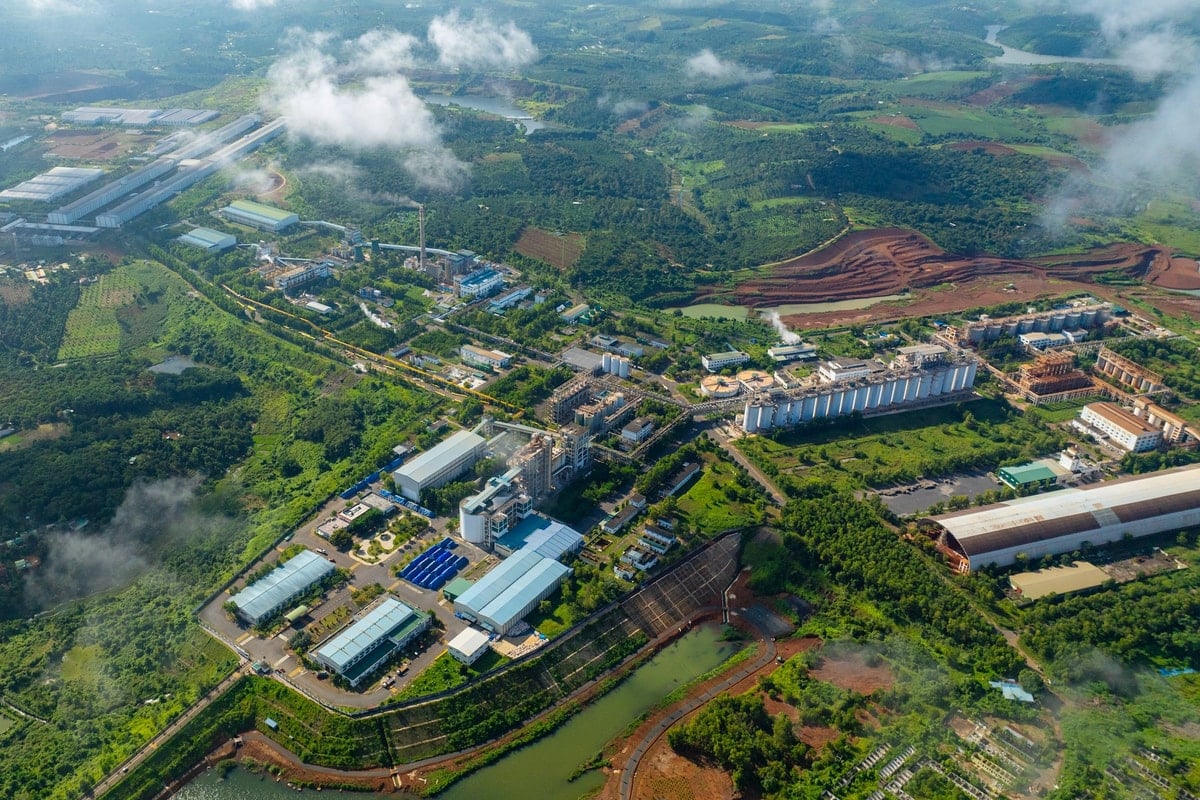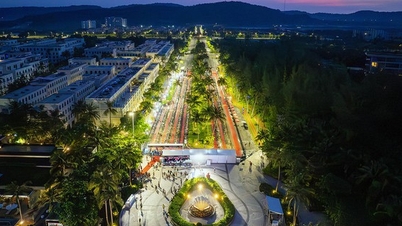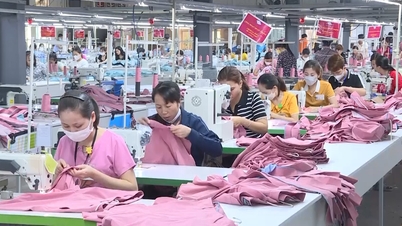After merging with Dak Nong and Binh Thuan provinces, Lam Dong has become one of the largest areas in the Central Highlands, with an area of over 24,200 km² and a population of nearly 3.9 million people. The merger not only opens up opportunities for economic space restructuring but also helps the province shape its development strategy towards green, modern and environmentally friendly industry. In this orientation, Lam Dong identifies high-tech aluminum smelting and green supporting industry as two important pillars to build a foundation for sustainable growth.
According to Mr. Nguyen Ba Ut, Director of Lam Dong Department of Industry and Trade, the province aims that by 2030, all industrial zones and clusters in the area will operate according to a circular model, in which wastewater is treated and reused, solid waste is classified and recycled; at the same time, rooftop solar power systems will be installed to reduce carbon emissions. This is an important step in the locality's green transformation roadmap, demonstrating its determination to link industrial development with environmental protection.

Lam Dong's two Nhan Co and Tan Rai aluminum complexes have an output of more than 1.5 million tons/year, making a great contribution to the local budget and export turnover.
"The province also coordinates with the Ministry of Industry and Trade to implement a green supporting industry development program until 2035, including three key components: technological innovation, building ecological industrial parks and training technical human resources to serve green transformation," Mr. Ut added.
In addition, Lam Dong Provincial Party Committee has proposed three key development pillars for the 2025-2035 period, including high-tech aluminum smelting, deep processing of agricultural products and green supporting industries. The formation of value chains linking industries will contribute to increasing the proportion of the industrial sector in GRDP, while meeting the requirements of energy conversion and emission reduction according to national commitments. Lam Dong's great advantage is that the old Dak Nong area owns bauxite reserves of about 5.4 billion tons - an abundant resource for the sustainable development of the aluminum smelting industry. Currently, the two aluminum complexes Nhan Co and Tan Rai are operating effectively, achieving an output of more than 1.5 million tons/year, contributing greatly to the budget and export turnover.
On that basis, Lam Dong is proposing to expand aluminum smelting capacity to 600,000 tons/year in the period 2025-2030 but in the direction of clean, energy-saving and environmentally friendly technology. New projects will be required to apply modern production lines, recycle red mud waste, strictly control emissions and utilize renewable energy during operation.
Vice Chairman of the Provincial People's Committee Le Trong Yen affirmed that the province is currently prioritizing attracting aluminum smelting projects that apply advanced technology and have high environmental standards. All projects must meet green technical standards before being granted an investment license.
In addition to the metallurgical industry, the province also focuses on developing green supporting industries to create a foundation for a sustainable industrial value chain. Industrial clusters in Duc Trong, Bao Lam and Krong No are being planned according to the ecological industrial park model, focusing on the production of aluminum components, agricultural equipment, green materials and bio-packaging. This is a suitable direction in the context of Vietnam's economy promoting the transition to a green growth model and a circular economy.
According to data from the Lam Dong Statistical Office, the industrial and construction sector currently accounts for about 28% of GRDP, with an average growth rate of 9% per year. After the merger, the province's goal is to increase the proportion of green and processing industry to 35-37% of GRDP by 2030, while reducing CO₂ emissions in production activities by at least 15%. At the same time, Lam Dong identifies renewable energy as an important pillar in the greening of industry. Currently, the province has 104 power projects with a total capacity of more than 8,200 MW, of which renewable energy accounts for about 47%. Effectively exploiting wind and solar energy sources not only helps reduce pressure on the national grid but also creates more motivation for green industrial enterprises to develop.
With its resource potential, existing industrial infrastructure system and clear development orientation, Lam Dong is gradually forming the appearance of a green industrial center in the Central Highlands. The “processing - support - greening” model is considered the key to help the province increase economic value, protect the environment and move towards sustainable development. In the near future, when high-tech aluminum smelting projects, green supporting industries and renewable energy come into synchronous operation, Lam Dong will not only be a famous tourist destination but also a new symbol of Vietnam’s green industry.
Source: https://moit.gov.vn/phat-trien-ben-vung/lam-dong-huong-toi-trung-tam-cong-nghiep-xanh-tay-nguyen.html



![[Photo] Ho Chi Minh City Youth Take Action for a Cleaner Environment](https://vphoto.vietnam.vn/thumb/1200x675/vietnam/resource/IMAGE/2025/11/04/1762233574890_550816358-1108586934787014-6430522970717297480-n-1-jpg.webp)
![[Photo] Ca Mau "struggling" to cope with the highest tide of the year, forecast to exceed alert level 3](https://vphoto.vietnam.vn/thumb/1200x675/vietnam/resource/IMAGE/2025/11/04/1762235371445_ndo_br_trieu-cuong-2-6486-jpg.webp)

![[Photo] The road connecting Dong Nai with Ho Chi Minh City is still unfinished after 5 years of construction.](https://vphoto.vietnam.vn/thumb/1200x675/vietnam/resource/IMAGE/2025/11/04/1762241675985_ndo_br_dji-20251104104418-0635-d-resize-1295-jpg.webp)
![[Photo] Comrade Nguyen Duy Ngoc holds the position of Secretary of the Hanoi Party Committee](https://vphoto.vietnam.vn/thumb/1200x675/vietnam/resource/IMAGE/2025/11/04/1762234472658_a1-bnd-5518-8538-jpg.webp)































































































Comment (0)